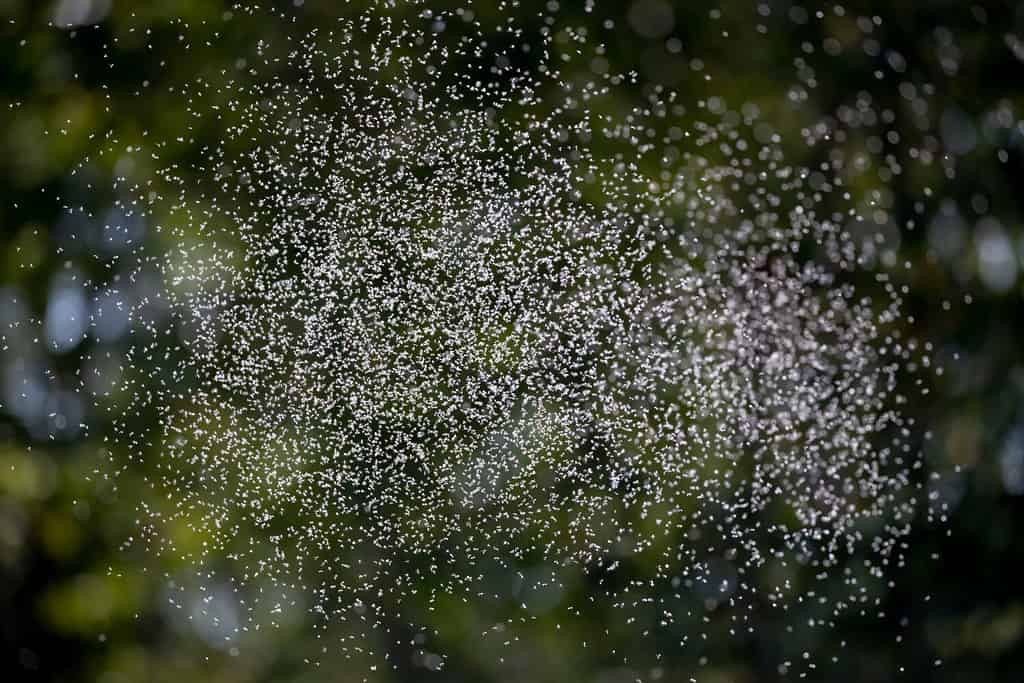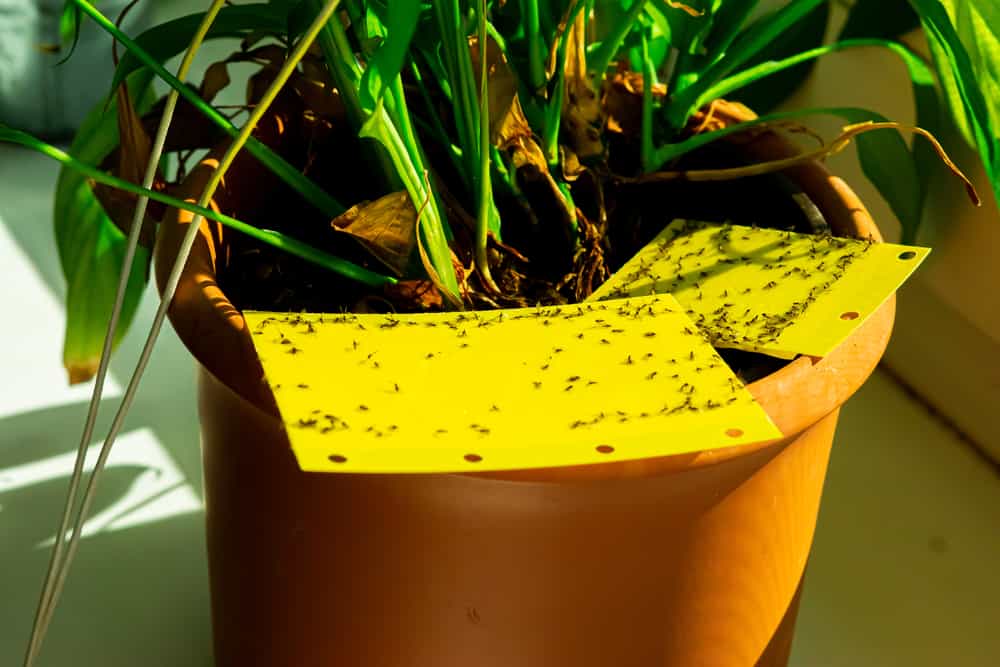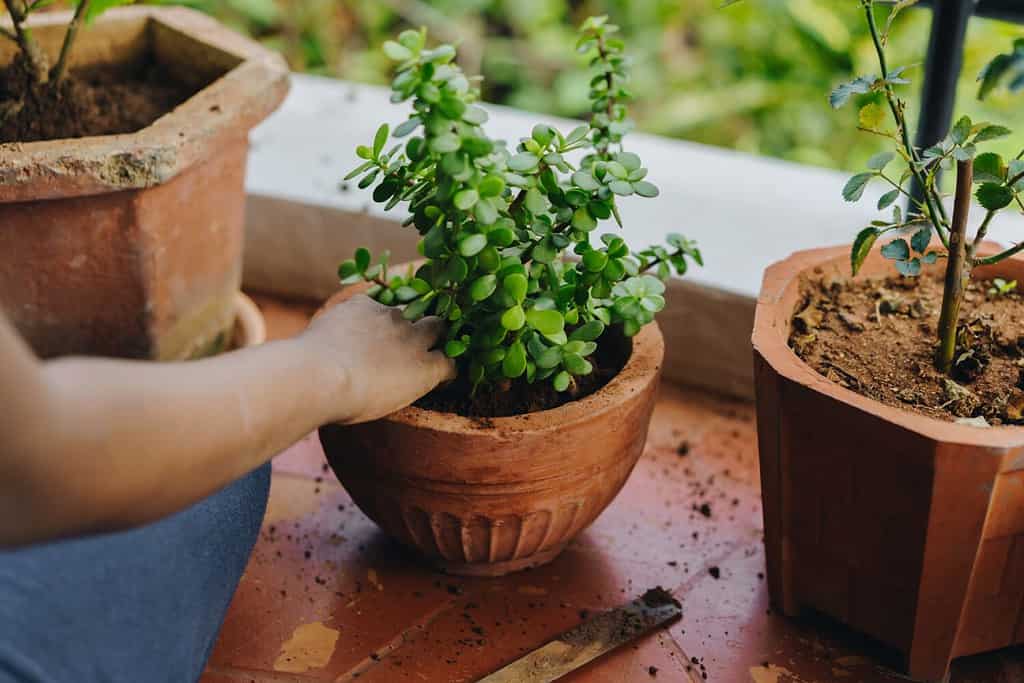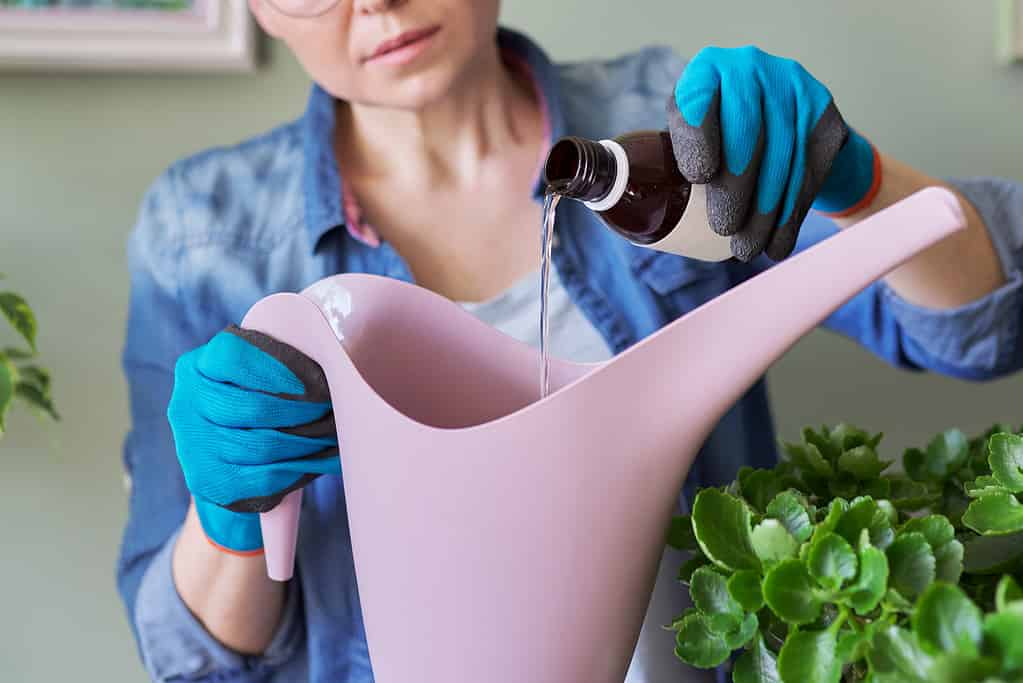Ask any indoor plant owner what their biggest pet peeve is and they’ll probably say ‘house gnats’. Sure, we all love our house plants but when those tiny gnats start swarming around that monstera or Calathea that you’ve carefully placed in your comfy plant nook it can be seriously annoying. Gnats find their perfect spot in moist soil and once these small, winged insects find their way inside, they can quickly increase in numbers. A female gnat can lay anywhere between 100 to 150 eggs during its short lifespan of about seven days. So, you can imagine how their numbers can just explode if you don’t act quickly in getting rid of gnats from your houseplants.
Fortunately, most adult gnats like the fungus gnat that you commonly find inside houses, do no damage to plants. Neither are they bloodthirsty, blood-sucking insects like their cousin the mosquito. Larvae present in large numbers, can, however, stunt plant growth and damage the roots of young plants and seedlings. So, how do you deal with a gnat infestation? Let’s find out.
Fungus Gnats in Houseplants: What Could Be the Cause
Before we find out about how to deal with a gnat infestation, let’s take a quick look at what causes gnats in houseplants. The most common cause is of course wet soil. You will always notice these tiny pests flying around your plant if the soil is wet and damp. Fungus Gnats are also known to be hitchhikers. So, if you decide to bring in some of your outdoor houseplants inside for the winter, there is a fair chance that these winged invaders are going to be tagging along. The same is the case with newly purchased plants. New plants are often known to harbor these unwanted hitchhiking pests. Thankfully, fungus gnats are usually noticeable and you can act as soon as they show up in your immediate environment. Here are some ways to deal with fungus gnats in your indoor plants.
Fungus Gnats in Your Indoor Plants: What You Can Do
1. Mosquito Bits

A cloud of gnats on a warm summer evening is quite a common sight.
©Kendall Collett/Shutterstock.com
Mosquito Bits or BTI is a microbial insecticide that is found to be highly effective in controlling fungus gnats. BTI or Bacillus thuringiensis is deadly to both mosquito larvae and fungus larvae. When gnat larvae eat the bacterial toxin, it damages their internal gut. This causes them to die immediately within a few hours or sometimes over the course of a week or two, depending on how much of the toxin they ingested. BTI also doesn’t pose any risk to humans or other living things, if that’s something you’re concerned about. They do not, however, work to kill eggs or adult fungus gnats because it needs to be eaten in order to be effective. Both adult fungus gnats and eggs do not eat.
How to Use:
To use mosquito Bits to treat gnats in indoor plants, make a tea by mixing four tablespoons of Mosquito Bits in one gallon of water. Leave the bits to soak in the water for at least 30 minutes. After 30 minutes, you can skim off the floating granules and use the tea to water your plants. For best results, use a chopstick to make four to six inch deep holes in the plant’s soil. This will ensure that the BTI solution is absorbed deeper into the soil.
2. Yellow Sticky Traps

Yellow is attractive to many garden insects including the fungus gnats.
©MarcOliver_Artworks/Shutterstock.com
The sticky trap helps to catch flying adult gnats and thereby prevents female gnats from laying anymore eggs in the soil.
How to Use:
Place the Yellow Sticky traps near the rim of your indoor plant pots. This will trap and kill any newly emerging gnat adults. To increase your chances of catching the flying gnats, try tapping the sides of your pot or disturbing the top of the soil.
3. Bonide Systemic Granules

When using bonide systemic granules to control gnats, make sure you read the product label carefully and follow the recommended application rates and frequency.
©Sahana M S/Shutterstock.com
Bonide Systemic Granules contain an active ingredient called imidacloprid. When gnat larvae ingest anything containing imidacloprid, it disrupts their feeding and reproductive processes and eventually kills them.
How to Use:
Mix the Bonide Systemic Granules into the top two to three inches of the soil. Water the plant as you normally would. According to the product label, the slow release Bonide granules will remain effective for upto eight weeks.
4. Diatomaceous Earth

Not only is diatomaceous earth non-toxic and chemical free, it is also effective against a wide range of household pests including fungus gnats, ants and mites.
©marekuliasz/Shutterstock.com
Diatomaceous earth is a mineralized fossil dust that is naturally dehydrating. It kills gnats by removing any oils and waxes on the outer cuticle of the insect’s body.
How to Use:
Dust the topsoil of your potted plant with diatomaceous earth. This will keep the soil dry. Practice ‘bottom watering’ your plants for a few weeks after you’ve applied diatomaceous earth. The substance is ineffective when it’s wet and you, therefore, want to minimize exposure to moisture as much as you can.
5. Beneficial Nematodes

Using beneficial nematodes is a natural and sustainable way of getting rid of gnats in houseplants.
©Valeriy_G/iStock via Getty Images
Beneficial nematodes have been found to be highly effective in controlling gnats in indoor plants. These microscopic worms can attack and kill these winged invaders, without harming any other organisms. Beneficial nematodes have a parasitic relationship with gnat larvae. They enter the insect’s body and release bacteria that are symbiotic with them. These bacteria then multiply and produce toxins that eventually help to eliminate the gnat larvae. The only downside to using beneficial nematodes to get rid of gnats in houseplants is that they are expensive. They also have specific temperature and humidity requirements and in some cases may require more than a single application in order to effectively eradicate the gnat population.
How to Use:
Follow the directions on the label of your product to prepare the solution carefully. Using a watering can, sprayer or injector hose, you can then apply the nematode solution to the soil surface of the affected plant.
FAQs:
- Does vinegar help to get rid of gnats in houseplants?
While a mixture of apple cider vinegar and dish soap is thought to be an effective DIY gnat repellant, using vinegar can sometimes be harmful to plants. The acetic acid in vinegar can alter soil pH, making it more acidic and could potentially damage the plant’s cell structure as well.
2. Is hydrogen peroxide effective in getting rid of fungus gnats?
Hydrogen peroxide is thought to be effective in killing the larvae near the top of the soil. To use hydrogen peroxide to get rid of gnats, mix one part hydrogen peroxide with four parts water and spray this solution on the affected plant.
3. Is neem oil effective in removing fungus gnats from houseplants?
Neem oil is not thought to be very effective in getting rid of gnats in houseplants. The effectiveness of neem oil against gnat larvae in the soil is somewhat limited because the larvae would need to feed on the plant treated with neem oil in order to be affected.
The photo featured at the top of this post is © Lyudmila Mikhailovskaya/Shutterstock.com
Thank you for reading! Have some feedback for us? Contact the AZ Animals editorial team.







